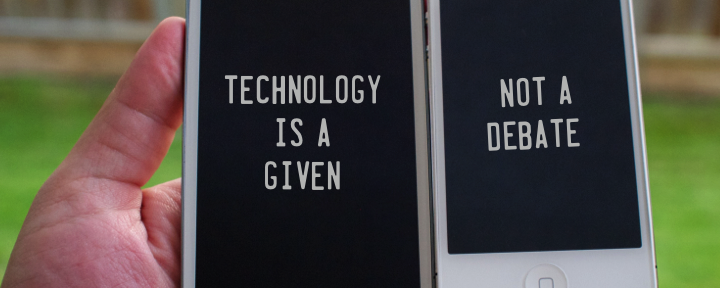By Drew Bush
Sometimes the best research grows out of collaboration and study within the confines of a classroom. For Scott Bell, an associate professor of Geography and Planning at the University of Saskatchewan, a graduate class in computer science provided just such an opportunity.
The past few years, Bell has collaborated with a colleague in Saskatchewan’s Department of Computer Science, Kevin Stanley, to teach a research-based class that gives students hands-on experience using an Android application for smartphones to measure human behavior at 2-minute intervals. Specifically, the application uses a phone’s accelerometer, GPS, camera, Bluetooth and other sensors to monitor participants’ movements and behaviors.
Last fall, students in the class wanted to examine health beliefs and constructed a survey to administer to participants before the phones were given out. Unrelated to the class’s planned content, the City of Saskatoon locked out its bus drivers, resulting in a month-long transit lockout. The lockout began two weeks before class started.
“We didn’t know what was going to happen during the shutdown,” Bell said. “But during our design stage we included in our survey a series of questions about how the participants get to work, and all of our participants were students at the [University of Saskatchewan]… Do they prefer to take public transit? Are they regular transit users? That kind of thing.”
Afterwards, Bell’s class gave these participants the phones and tracked them for a month—with the lockout ending two weeks into this period. Bell and Stanley’s students could then look at how student movement patterns and behaviors changed during and after a time period in which public transport was unavailable.
“It was interesting,” Bell said. “And one of the main findings, was that there wasn’t a change in attendance. So when the strike, when the lockout was on, everybody was still coming to the university at about the same rate as they came after the lockout ended, so when transit was fully available again.”
However, Bell and Stanley’s students noticed that when the lockout ended student trips to and from school actually became quite a bit shorter. They hypothesized that when their participants were forced to find alternate means of transportation they often relied on friends with private vehicles or on their own car.
This new reliance on private vehicles made additional trips, like running errands, possible on the way home thanks to the flexibility they allow compared to public transit. While not yet confirmed in this research, Bell calls this type of behavior “trip-chaining,” an idea often mentioned in transportation geography. Once the lockout ended and these participants returned to public transport, such behavior ended.
“We did learn in this study that we could use this technique to study transit behavior and we’re thinking a little bit more about that,” Bell said. “About how we can maybe do that with some of the Geothink partners that have more open data policies regarding their transit data and transit use.”
If Bell and Stanley’s students had only examined student attendance rates and arrival times at University of Saskatchewan, then they might have concluded the lockout had little affect on student behavior. However, by using surveys and smartphones, this technique established how stressful it was for students and, perhaps most importantly, how behaviors actually changed on the ground.
If you have thoughts or questions about this article, get in touch with Drew Bush, Geothink’s digital journalist, at drew.bush@mail.mcgill.ca.

